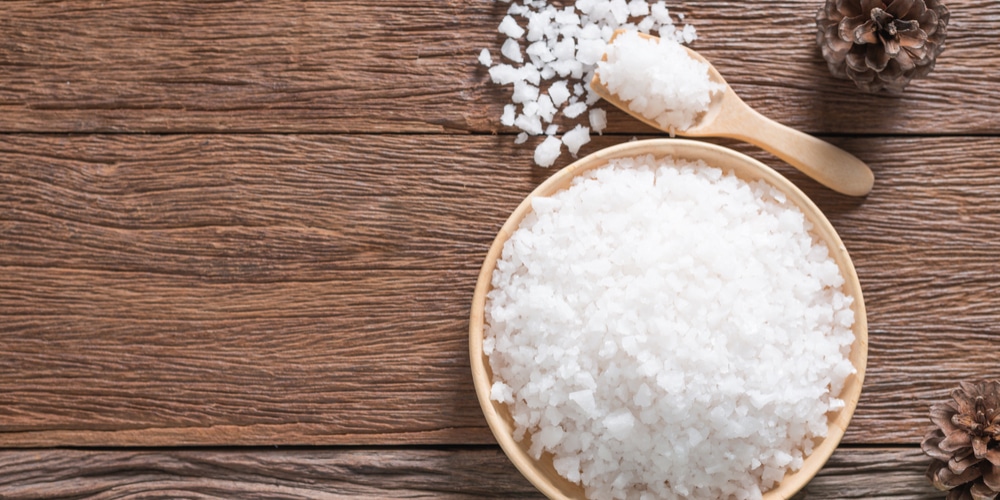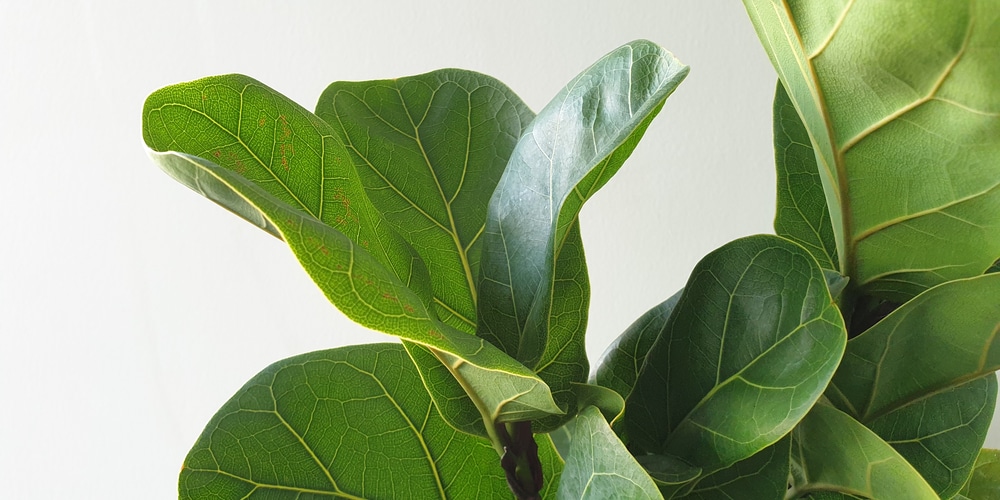You do not need to go to a gardening center to buy Epsom salt. In fact, you can find it at most drug stores, and people use it as a remedy for aching joints, pains, and sprains. But you might want to get the agricultural-grade, unscented Epson salt for your fig anyway.
Is Epsom salt good for fig trees? Yes, but only when necessary. Epsom salt (Magnesium sulfate) is a micronutrient. Unlike table salt, Epsom salt does not destroy the soil, causing plants to get sick and die. Instead, it provides magnesium and sulfur to depleted soils. And you can apply it as a granular fertilizer around the base of your fig trees for slow release or as a leaf spray.
When Is Epsom Salt Good for Fig Trees?

Epsom salt is a cost-effective way to address magnesium and sulfur deficiencies. For example, you can dilute one tablespoon in one gallon of water and spray the mixture on the underside of your fig trees’ leaves.
Usually, the plant shows signs of magnesium and sulfur deficiencies by yellowing the leaves at the bottom. If you see a yellow midrib on the lower leaves, your fig tree might be deficient in magnesium. In this case, a foliar spray usually is the best option.
Generally speaking, the best time to apply magnesium sulfate to a fig tree is at the beginning of the plant’s life cycle. You can put an Epsom salt drench into the medium where you start your fig tree seeds. The micronutrients will not help the seeds germinate, though.
Before Using Magnesium Sulfate In Your Orchard
Although adding some Epsom salt to enhance the fig trees’ production is a comforting thought, you may see no positive change. Why? Because these micronutrients become available when other variables like soil pH are optimal.
It is important to note that treating magnesium deficiency with other slow-release magnesium sources could also lead to better results. And using Epsom salt on fig trees that show no signs of magnesium shortage could only lead to chemical overdosing.
Some experts also do not recommend using Epsom salt for regular gardening practices in your backyard. In detail, they state that such amendment only belongs to intensive crop fields. For this reason, you might want to experiment with only a few plants first. Or better yet, do some soil tests before applying it to all your fig trees.
Pollution Hazard
Magnesium sulfate is extremely water-soluble. So, if your soil is not deficient or your fig trees do not need it, it will percolate deeply into the ground, polluting the groundwater system. And the worst part is that it travels so far underground that it becomes impossible to clean up.
Removing such contaminants is a big challenge for environmental specialists. Above all, it takes a lot of money and different methods to manage agrochemical poisoning. So, only use Epsom salt if you are 100% sure your fig trees need it.
Lastly, do not leave Epsom salt granules exposed in sunny locations for extended periods because magnesium sulfate creates toxic fumes when heated.
5 Tips For Applying Epsom Salt To Your Fig Trees Correctly
- Do not use Epsom salt for pest control. Also, it does not prevent diseases like powdery mildew. Using Epsom salt may worsen the situation.
- Epsom salt works as a fertilizer in acidic, sandy soil. But one application is usually more than enough. Doing soil tests before adding magnesium sulfate to your soil is highly recommendable.
- Experiment with lower dosages at first—like a tablespoon per gallon of water to avoid soil imbalances or scorched leaves. In the ground, magnesium sulfate can interfere with calcium absorption. Why? Mainly because the magnesium atoms are smaller than calcium. For reference, figs use calcium to build cell walls and fruits.
- If you grow your fig trees in containers, they might require more work and frequent watering. This can cause the Epsom salt granule to dissolve faster. So, applying it as a foliar spray is better in this case.
Is Epsom Salt Good for Fig Trees?: Conclusion
Most of the time, your soil is not deficient in micronutrients like magnesium and sulfur.
But you might have used too much NPK fertilizer, causing signs of deficiencies in the plant—even though your soil is fine.
So, only use Epsom soil if you follow a rigorous and beneficial fertilizing schedule yet still notice magnesium and sulfur deficiencies.
Related Article: Is Epsom Salts Good For Lilacs?

